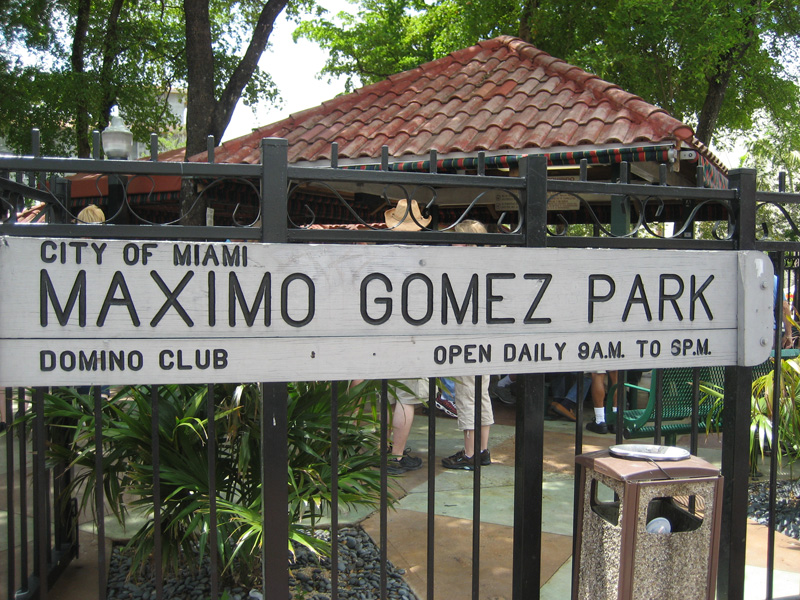Source: Photograph© (2009) by WTL.
Comment: Máximo Gómez (1836-1905) is famous among Cubans because he is a great general from the Dominican Republic who fought for Cuban independence, first, during the Ten Years' War (1868-1878) and, second, during the Spanish-Cuban-American War (1895-1898). The first general of this second, and successful war of liberation was Antonio Maceo y Grajales (1845-1896). When Maceo, who was an Afro-Cuban, was killed by Spanish troops in an ambush (see below), Gómez became the general in charge of the war. Máximo Gómez taught Maceo the art of guerrilla warfare. Maceo mastered it and implemented it so successfully that he is considered one of the great Latin American generals of the 19th century alongside the others (e.g., San Martín, Bolívar, Sucre, O'Higgins, Artigas, Morelos, etc.). In 1895, José Martí ("Father of Cuban Independence") asked Gómez to lead the second war of liberation. After Martí's death, the new civilian authority, Salvador Cisneros Betancourt, ordered Gómez to replace Maceo and to break with Maceo; Gómez refused and therefore was dismissed. Instead, Gómez asked for Maceo's reinforcement support; during Maceo's march back across the island to join Gómez, Maceo was killed. When the United States entered the war in 1898 ("Remember the Maine," Teddy Roosevelt and the Rough Riders, etc.), the U.S. sent its invading armed forces to join Gómez against the Spanish forces, but by then the Spanish army of 160,000 was putting up little resistance and surrendered within a few months. (Cuba has three independence days: May 20, 1902, from the USA; October 10, 1895, declaration of independence from Spain; Castro's Cuba celebrates his attack on the Moncada Barracks, July 26, 1953.)

